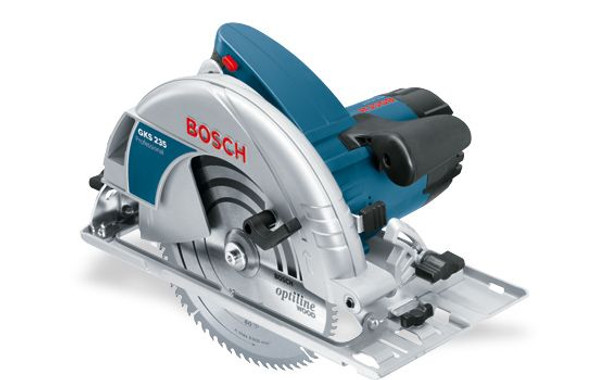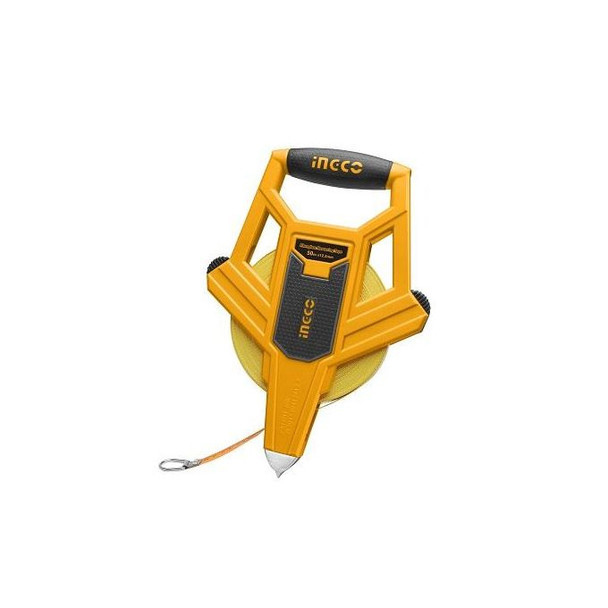Maintaining Your Industrial Equipment: Tips and Best Practices
The maintenance of industrial equipment is critical for ensuring that manufacturing operations run smoothly and efficiently. By keeping machines well-maintained, companies can avoid costly downtime and production delays. Equipment maintenance can also help to improve safety in the workplace by preventing accidents and injuries that could occur because of faulty machinery.
DongCheng Cordless Driver Drill DCJZ10-10 (TYPE E/EK)
Another key point about regular equipment maintenance is longevity. Regular maintenance can help extend the lifespan of equipment, saving a company money in the long run. One of the ways to maintain industrial equipment is to clean the machinery regularly, both inside and out. Cleaning machines help to prevent the build-up of dust and other particles that can cause problems down the line. Regular cleaning and lubrication of machines can help to prevent many common issues from occurring.
Benefits of Regular Maintenance of Industrial Equipment
Regular maintenance of industrial equipment is essential for ensuring optimal performance, reliability, and longevity of your machines. By following a preventive maintenance schedule, you can enjoy the following benefits:
Increased Equipment Lifespan:
Regular maintenance significantly contributes to prolonging the lifespan of industrial equipment. Through scheduled inspections, timely repairs, and part replacements, the wear and tear that machinery naturally undergoes can be addressed. This practice prevents minor issues from escalating into major faults, thereby extending the operational life of the equipment. Ultimately, this proactive approach not only saves costs on premature replacements but also ensures consistent and reliable performance over an extended period.
Improved Operational Efficiency:
Well-maintained equipment operates at its peak efficiency. Regular maintenance plays a pivotal role in ensuring the consistent and optimal performance of industrial equipment. By addressing potential inefficiencies, lubricating moving parts, and calibrating systems, regular maintenance keeps the equipment functioning at its best. This enhanced operational efficiency leads to increased productivity, reduced energy consumption, and smoother operations within the industrial setting. Consequently, businesses can meet production targets more reliably and with greater precision, positively impacting overall output and profitability.
DongCheng Angle Grinder DSM125A
Cost Savings and Reduced Downtime:
Although regular maintenance involves an upfront cost, it can lead to significant savings in the long run. By addressing issues proactively, rather than reactively dealing with breakdowns, we can prevent unplanned downtime, which can be costly in terms of lost production, emergency repairs, and idle labor hours. Moreover, planned maintenance typically incurs lower expenses than emergency repairs or component replacements, contributing significantly to cost savings over time.
Enhanced Safety for Workers and Machinery:
Regular maintenance isn’t just about preserving equipment; it's also about safeguarding the well-being of the workforce and the machinery itself. Regular inspections and upkeep not only identify potential hazards but also rectify them before they become safety risks. Well-maintained equipment operates more reliably, reducing the likelihood of accidents or malfunctions that could endanger workers. Additionally, ensuring machinery operates within prescribed safety parameters enhances overall workplace safety, promoting a secure environment for employees while also protecting the equipment from unnecessary wear and damage due to misuse or neglect.
Common Categories of Industrial Equipment
1. Machinery and Heavy Equipment:
These are large and powerful machines that can perform tasks such as digging, drilling, cutting, lifting, and moving heavy materials and objects. Examples of machinery and heavy equipment include bulldozers, cranes, excavators, forklifts, loaders, and various specialized tools. These machines are essential for manufacturing, fabrication, and processing tasks across different industries. Regular maintenance for machinery involves lubrication, inspection of moving parts, calibration, and structural integrity checks to ensure their smooth and safe operation.
2. Electrical and Electronic Systems:
Industrial facilities often rely on a range of electrical and electronic systems to control operations, manage processes, and automate tasks. This category includes control panels, programmable logic controllers (PLCs), sensors, switches, motors, and other electronic components crucial for regulating machinery and maintaining production processes. Maintenance for these systems involves inspecting wiring, checking for overheating, updating software/firmware, and ensuring proper functioning of components to prevent electrical failures and system malfunctions.
Bosch Hand-Held Circular Saw GKS 235 Professional
3. Hydraulic and Pneumatic Systems:
Many industrial machines and tools operate using hydraulic or pneumatic power. Hydraulic systems utilize fluid pressure to generate force, while pneumatic systems use compressed air. Common examples include hydraulic presses, lifts, pneumatic drills, and cylinders. Maintenance for these systems involves checking for leaks, inspecting hoses and seals, fluid level monitoring, and ensuring proper pressure levels. Regular maintenance prevents system failures, maintains efficiency, and ensures consistent performance.
4. Conveyors, Pumps, and Compressors:
These are integral components in industrial processes for transporting materials, handling liquids, and regulating air/gas flow. Conveyors move goods along assembly lines or within warehouses, pumps are used for transferring liquids or gases, and compressors regulate air or gas pressure for various applications. Maintenance includes checking for wear and tear, lubrication of moving parts, monitoring pressure levels, and inspecting for leaks to maintain operational efficiency and prevent unexpected breakdowns.
Ingco Fiberglass Measuring Tape
Key Maintenance Tips for Industrial Equipment
Industrial equipment requires regular care and attention to maintain its optimal performance and reliability. Here are some key maintenance tips that you can follow to keep your machines in good shape:
- Scheduled Inspections and Preventive Maintenance: Regular, scheduled inspections are fundamental for identifying potential issues before they escalate. Establishing a maintenance schedule ensures that equipment is checked at predetermined intervals, allowing for preventive measures to be taken. This proactive approach helps in detecting wear and tear, potential faults, or signs of deterioration, enabling timely repairs and reducing the likelihood of unexpected breakdowns.
- Lubrication and Fluid Checks: Proper lubrication of moving parts and regular fluid checks are crucial for the smooth operation of industrial machinery. Lubricants reduce friction, prevent wear, and ensure components operate efficiently. Checking and maintaining fluid levels (such as hydraulic fluids, oils, coolant, etc.) are essential to prevent overheating, corrosion, and system failures.
- Calibration of Sensors and Measurement Tools: Accurate sensor and measurement tool calibration are essential for precision in industrial processes. Regular calibration ensures that these instruments provide accurate readings and maintain consistency in operations. This practice is crucial for maintaining quality standards and ensuring optimal performance.
- Cleaning and Debris Removal: Keeping equipment clean is vital for its proper functioning and longevity. Regular cleaning helps prevent the buildup of dirt, dust, or debris that can hinder equipment performance. Clearing out debris from moving parts or sensitive areas prevents potential damage and ensures optimal functionality.
- Replacement of Worn-Out Parts: As equipment operates, parts will naturally wear down over time. It's essential to monitor and replace worn-out or damaged components promptly. Regularly scheduled replacement of consumable parts, such as belts, filters, seals, or bearings, is crucial to prevent equipment failures and maintain efficiency.
- Software and Firmware Updates for Automated Systems: For equipment with automated systems or electronic controls, keeping software and firmware up to date is critical. Manufacturers often release updates to improve functionality, address security vulnerabilities, or enhance performance. Regularly updating software and firmware helps in ensuring the equipment operates with the latest features and remains secure against potential cyber threats.
DongCheng Cordless brushless chain saw -DCML250
Safety Measures During Maintenance
Maintenance of industrial equipment can involve various hazards and risks, such as electric shocks, burns, cuts, falls, and explosions. Therefore, it is important to follow some safety measures during maintenance to protect yourself and your co-workers from harm. Some of the safety measures are:
- Lockout/Tagout Procedures: Implementing lockout/tagout procedures is crucial to prevent unexpected machine start-ups or releases of stored energy while maintenance or servicing is being performed. This involves isolating the energy sources of the equipment by using locks and tags to ensure that it cannot be operated until maintenance is complete. This procedure helps safeguard maintenance personnel from accidental injuries caused by unexpected machine activation.
- Training for Maintenance Personnel: Adequate training for maintenance personnel is essential to ensure they understand the potential hazards associated with equipment maintenance and servicing. Training should cover proper procedures, safety protocols, and the correct use of tools and equipment. Personnel should be aware of potential risks and how to mitigate them to perform maintenance tasks safely.
- Use of Personal Protective Equipment (PPE): Providing and mandating the use of appropriate Personal Protective Equipment (PPE) is crucial for the safety of maintenance personnel. Depending on the task and associated risks, PPE may include helmets, gloves, eye protection, hearing protection, respiratory protection, and safety footwear. Ensuring that personnel wear the necessary PPE significantly reduces the risk of injury during maintenance activities.
- Communication and Coordination Among Team Members: Effective communication and coordination among team members involved in maintenance tasks are vital for ensuring everyone is aware of the activities being performed. Clear communication helps in preventing misunderstandings, avoids simultaneous work on the same equipment, and ensures that everyone follows established safety protocols. This coordination minimizes the potential for accidents or injuries due to miscommunication or lack of awareness.
Conclusion
Maintenance is a vital aspect of industrial equipment management that can bring many benefits to your business, such as increased equipment lifespan, improved operational efficiency, cost savings and reduced downtime, and enhanced safety for workers and machinery. However, maintenance is not a one-time or reactive activity, but a continuous and proactive process that requires planning, execution, and evaluation. By adopting proactive maintenance strategies, such as scheduled inspections and preventive maintenance, lubrication and fluid checks, calibration of sensors and measurement tools, cleaning and debris removal, replacement of worn-out parts, and software and firmware updates for automated systems, you can ensure that your equipment is always in optimal condition and ready for use. Proactive maintenance can also help you prevent potential problems, avoid unnecessary costs and risks, and achieve your business goals and objectives. Therefore, we encourage you to invest in regular maintenance of your industrial equipment and reap the rewards of your efforts.
Recent Posts
-
Top 5 OBD2 Scanners for DIY Car Diagnostics in 2025
Top 5 OBD2 Scanners for DIY Car Diagnostics DIY car maintenance is booming in 2025, and having the r …Apr 26, 2025 -
Agricultural Sprayer and its uses
Introduction Agricultural sprayers are a special type of farm equipment used for applying liquid sub …Apr 25, 2025 -
Why Serious Mechanics Are Switching to Japanese-Made Shinano Air Tools
Japanese-Made Shinano Air Tools Key takeaway: Shinano’s tight-tolerance, twin-hammer designs d …Apr 24, 2025









